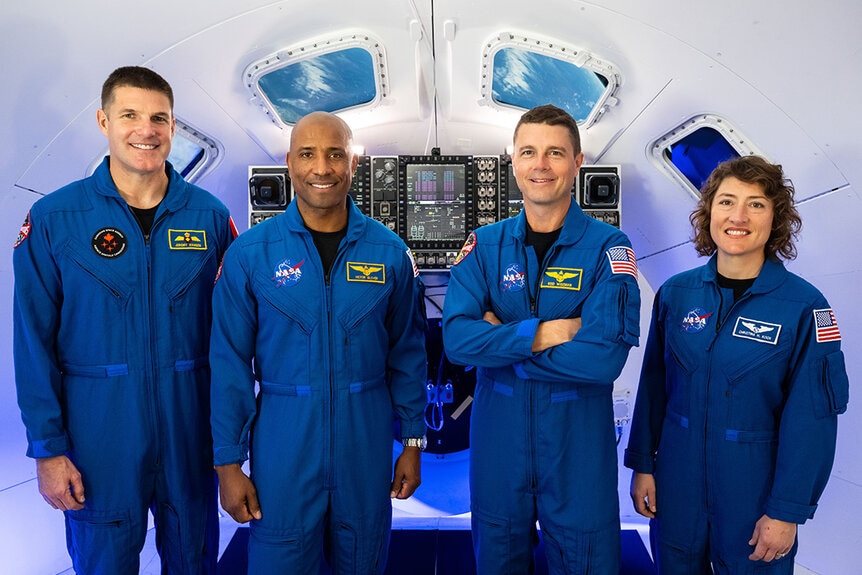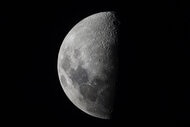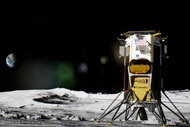Create a free profile to get unlimited access to exclusive videos, sweepstakes, and more!
Why NASA Is Postponing Its Next Crewed Moon Missions
Crew safety is priority number one.
SYFY’s The Ark (streaming now on Peacock) features a crew of interstellar explorers in a race against the clock. They’re fleeing a dying planet in the hope of finding a new home for humanity out in the cosmos. As expected, things go terribly wrong, and they trade a broken world for a broken spacecraft, adrift between stars. If they’d had more time, they might have tested and retested their safety systems and had a smoother trip.
In the real world, humanity is preparing for a return to the Moon with NASA’s Artemis program, and fortunately, we have the benefit of time. With that in mind, NASA recently announced a delay to the upcoming crewed Artemis missions, citing crew safety as the primary reason.
NASA Delays Crewed Artemis Missions, Citing Safety Concerns
Artemis I successfully flew around the Moon and returned home in December 2022. By most accounts, the mission was a huge success, but it revealed some challenges that the space agency wants to address before we put people inside the Orion spacecraft on a trip to the Moon.
RELATED: Behold Artemis 1’s Liftoff in Stunning Slow Motion, and the Melted Launch Pad it Left Behind
The original plan for Artemis II, the first crewed Artemis mission, was to launch in November of 2024 with the Artemis III landing mission following a year later. Now, NASA has announced a 10-month delay, target launch dates for Artemis II and III have been pushed to September 2025 and 2026, respectively. Barring any additional delays, Artemis IV and the lunar Gateway station remain on target for 2028, according to NASA.
“We are returning to the Moon in a way we never have before, and the safety of our astronauts is NASA’s top priority as we prepare for future Artemis missions,” said NASA Administrator Bill Nelson.
Sending an empty spacecraft into the void is one thing, but sending it with a crew of four aboard is another animal entirely. In order to support the Artemis II and III crews, NASA and its partners are busily testing and certifying critical environmental control and life support systems. During those certifications, they’ve uncovered a few problems which need to be addressed before flight. That’s precisely what these certifications are meant to achieve, identifying problems on the ground before launch.
Engineers are also investigating some unexpected heat shield erosion which occurred during Artemis I. The heat shields on the Orion spacecraft were tested and modeled extensively before flight and the flown shield has been studied since it returned in 2022. The heat shield is designed to erode away under the ablative force of reentry, but more of it was shed than expected. There was still plenty to protect the spacecraft, but NASA wants to better understand what happened and why, before putting people behind the shield.
RELATED: In the Market for a Moon Car? NASA Seeks Proposals for Next-Gen Lunar Rover
“We are letting the hardware talk to us so that crew safety drives our decision-making. We will use the Artemis II flight test, and each flight that follows, to reduce risk for future Moon missions. We are resolving challenges associated with first-time capabilities and operations, and we are closer than ever to establishing sustained exploration of Earth’s nearest neighbor under Artemis,” said Catherine Koerner, associate administrator, Exploration Systems Development Mission Directorate at NASA Headquarters in Washington.
If there are any additional delays to Artemis II, we can expect a corresponding delay to Artemis III. The idea is to allow time between flights in order to investigate, learn, and incorporate those learnings into future missions. Unlike the crew of The Ark, NASA is more concerned with doing it right than doing it fast, and doing it right takes time.
While we’re waiting for boots on the Moon, there’s plenty of time to catch up on The Ark, streaming now on Peacock.
























